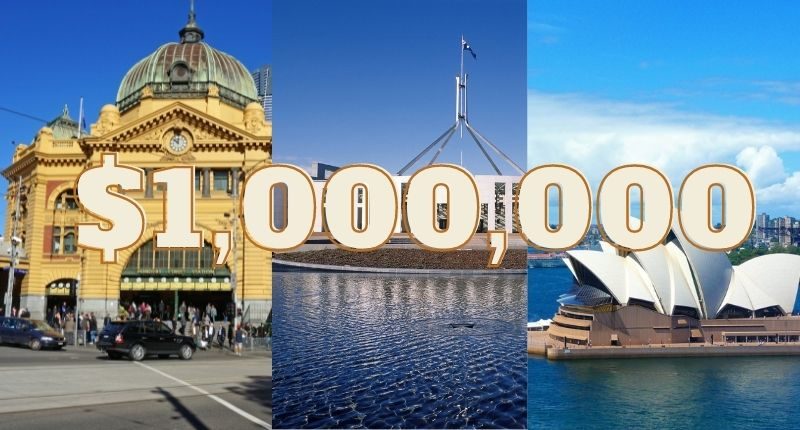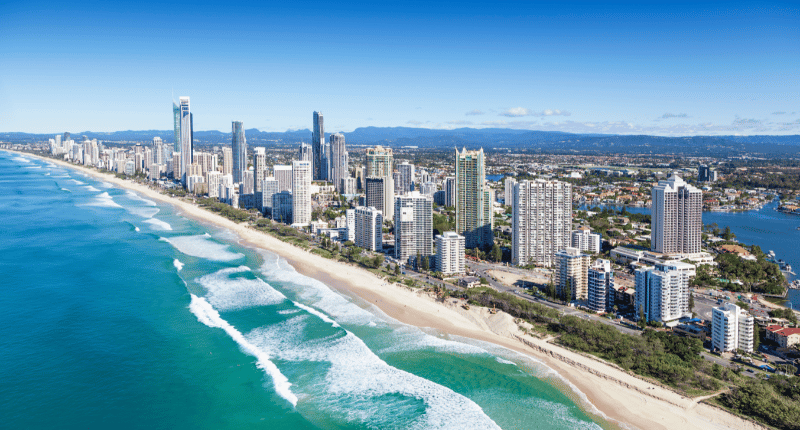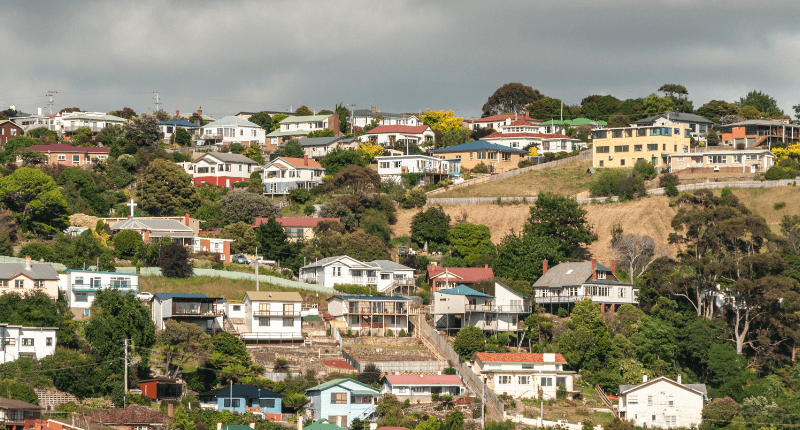- According to Domain, house prices have recorded 18.8% year-on-year growth
- Canberra has edged over a million after recording a 29.9% annual increase
- During the June quarter, Sydney house prices rose by almost $1,200 a day
The million-dollar club has grown across Australia with Sydney now being joined by Melbourne and Canberra, however, Domain warns a slow down may be on the horizon.
Domain’s June Quarter 21 House Price Report has revealed house prices recorded 5.8% quarterly growth. Year-on-year growth was 18.8%, with the national median house price hitting a historical record.
Canberra’s median house price is up 29.9% year-on-year to $1,015,833, while Sydney recorded a 24% increase to $1,410,133. In the three months to June, Sydney’s median house price rose by almost $1,200 a day.
In regional New South Wales, house prices have surged past $600,000, the steepest annual increase since 2004. In regional Victoria, the median house price is almost $500,000, the fastest rate of growth since 2003.
According to Domain, the most affordable city to purchase a house is in Perth. Despite the annual growth rate being the fastest in 11 years, it falls below the pace of the other capital cities with 12.3% year-on-year growth.
Domain CEO Jason Pellegrino noted that, globally, this trend is being witnessed not just in Australia but globally. Worldwide, the average house price is up 7.3%, growing at the fastest pace in 15 years.
Additionally, he notes that the latest report shows signs that the rate of growth may be moderating.
“It is hard to confirm if this is seasonal impact with the prior corresponding period being impacted by COVID-19, but it could also be a signal that the property markets in our most populous states have reached a price growth peak and we may be moving toward more moderate growth,” he said.
“Auction clearance rates in Sydney and Melbourne have come off in June, compared to May 2021. As we expect supply of housing to pick up heading into Spring we will watch closely if this has an impact on house prices.”
Jason Pellegrino, Domain CEO

Sydney
Baulkham Hills and Hawkesbury recorded the largest quarterly house price growth in Greater Sydney, up 20%, with the median house price now $1.62 million.
The Eastern Suburbs are above $3.5 million with the Northern Beaches, North Sydney and Hornsby hitting a median above $2.5 million.
“With the rate of growth much the same over the past two quarters it signals that we may start to see a subtle moderation in the growth of the NSW property market,” commented Domain’s senior research analyst, Dr Nicola Powell.
“We will watch this closely to see if it is a longer-term trend or a short-term response from the Bondi cluster outbreak which came to light on 17 June 21.”
Melbourne
The Mornington Penisula recorded median house price growth of 6.3%, the most significant in the Greater Melbourne area during the quarter.
“Since Melbourne emerged from lockdown in late-2020, house prices have risen rapidly, producing three-quarters of consecutive growth above 4 per cent which has not been seen since the post-GFC rebound,” added Dr Powell.
“The bounce-back is spurred on by pent up buyer demand, cheap credit and a rebounding economy.
“Evolving housing needs also played a part as we saw keyword searches for “study” and “home office” across Victoria increase on Domain 130 per cent annually 4 as a result of the pandemic.”
Nicola Powell, Domain senior research analyst
Canberra
In the Australian Capital Territory, Canberra house prices broke the $1 million barrier with the median house price increasing by $1,000 a day during the quarter. Woden Valley and North Canberra both recorded a 30% increase in price, the highest of any suburb.
Tuggeranong remains the most affordable area to buy a house at $753,000.
“Canberra houses have experienced the steepest price acceleration in almost three decades as buyer demand is unable to keep up with supply, resulting in the number of properties for sale hitting a multi-year low,” said Dr Powell.
“It’s higher average income, large public sector employment base, lifestyle and a turnaround in interstate migration that continues to buoy the local housing market.”








